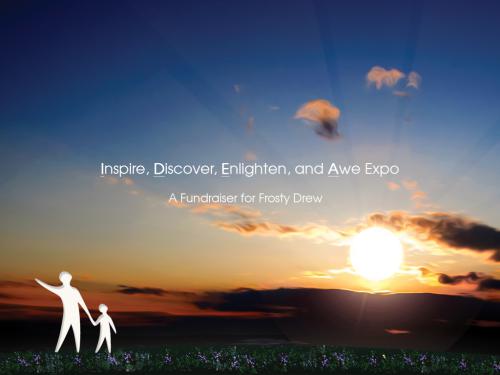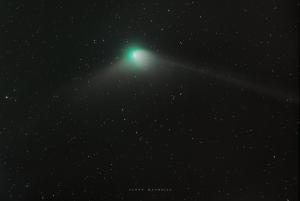Celebration of Space - September 8, 2023
Tomorrow, Saturday, September 9, 2023, Frosty Drew Observatory and Science Center will host our annual Inspire, Discover, Enlighten, and Awe (IDEA) Expo fundraiser. Due to the dismal weather forecast, we will be canceling our on site activities. Though the fundraiser is still on, and some of the team will be on site in case anyone wants to swing over. Regardless, please take a moment this weekend to check out our page for the fundraiser, and consider supporting Frosty Drew’s mission to enlighten, discover, inspire - through education and research - knowledge about science, the night sky, and the universe. There are amazing opportunities for our children to become the explorers of tomorrow, and these opportunities are available for anyone who wants them. At Frosty Drew we want to introduce the spark into the minds of children, that they have the chance to be the first astronauts to walk on Mars, have the opportunity to work either on the Moon or in lunar orbit, or be the designers of the James Webb Space Telescope successor. Many of the children that we had introduced astrophysical sciences to years ago, are now in college studying to be astrophysicists! It is a true joy for us at Frosty Drew when this happens. Every one of our team members, and directors want to know the children who will lead tomorrow’s exploration, and we consider ourselves privileged to do so. Your support matters greatly to us, and it makes it possible for us to complete this mission, thank you!
On Thursday, September 14, 2023 at 9:40 pm ET, the Moon will arrive at the point in its orbit around Earth where it is between Earth and the Sun. This is scientifically known as conjunction, but everyone else calls it the new Moon. On Thursday, the Moon will rise and set with the Sun, and the side of the Moon that is in direct sunlight will be the opposite side than we see. This will result in overnight Thursday – Friday being the darkest night of the month. Once the new Moon passes, the waxing crescent lunar phases will kick in. The best times to see the super thin crescent are right after sunset in the East → Southeast sky, just over the horizon. Now is the time to start gearing up for dark nights. As the Moon approaches the new phase, it continues to wane into a thin crescent and rises later each night, eventually during the pre-dawn morning sky.
Over the past week, the hype around Comet C/2023 P1 Nishimura has really gone into overdrive. The recently discovered comet has been brightening quite quickly in the predawn morning sky and is now at the limit of naked eye visibility. The comet appears to be a long period comet, which is a comet with an orbital period greater than 200 years. It also appears that this is the first time this comet has traveled into the inner Solar System, making it potentially vulnerable to the intense heat and radiation of the solar wind. As a result the comet can become quite bright due to outgassing of the comet’s nucleus. As of this morning, the comet has already produced a very intense dust tail that stretches about 3° in length, as well as a dimmer ion tail.
Comet Nishimura will make its closest approach to Earth on Wednesday, September 13, 2023 at a distance of 79.4 million miles distant, which is about 332 times the distance of the Moon. Shortly after passing Earth, Nishimura will reach perihelion, which is its closest approach to the Sun, on Monday, September 18, 2023, at a distance of 21 million miles distant, which is slightly over half the distance of Mercury from the Sun. Once the perihelion transit completes, the comet will become briefly visible in the evening twilight sky. During this time the comet could be quite bright.
Over the next couple of weeks we will keep a close eye on Comet Nishimura and will post finder charts to our Instagram if we think it is worth an attempt. In the meantime, if you want to try for a view, you will need to be out in the morning during the predawn hours, and have a good view of the ENE horizon. The comet will be 5° over the horizon at 5:00 am. Let us know if you see it.
Tonight, Friday, September 8, 2023 at 7:56 pm ET, the launch window opens for the SpaceX Falcon 9 rocket to launch from Cape Canaveral, FL. The launch is carrying the next deployment of Starlink satellites into orbit. Launches from Florida are often visible along the East Coast, depending on the direction of the launch. SpaceX does not publish visibility maps, but the Falcon 9 vehicle is often spotted zooming across the sky. At 7:56 pm, the rocket will be in sunlight, while observers are in twilight, which will allow for a stunning view of the launch vehicle’s exhaust plume. Unfortunately, Southern New England is under clouds for pretty much the entire weekend, though other locations along the East Coast may have clearer sky conditions. If you find yourself with a clear view of the S → SE horizon this evening, step outside and see if you can spot the launch vehicle. At first it will look like a fast moving star. Eventually the exhaust plumes will become visible. Let us know if you see it.
On Monday, September 11, 2023, the International Space Station (ISS) will commence evening passes over the United States, with family friendly passes happening nightly over our region. We call these passes “family friendly” because they happen in the evening hours, while most families are all home, and before everyone goes to bed. Catching a view of the ISS passing over is fabulous, as the station is very bright, and a binocular or backyard telescope view will usually spot the solar panels and lab compartments. Here are a few notable passes for the coming week:
Tue, Sep 12 at 8:05 pm, starting in the S, rising to 23°, heading towards the SE, and into orbital sunset
Wed, Sep 13 at 8:52 pm, starting in the WSW, rising to 62°, and into orbital sunset ← Fabulous pass!
Thu, Sep 14 at 8:03 pm, starting in the SW, rising to 65°, heading towards the ENE, and into orbital sunset ← Fabulous pass!
Orbital sunset occurs when the ISS enters Earth’s shadow and disappears from our view. When observing the station, we see sunlight reflecting off the panels and labs, so the station needs to be in direct sunlight, while the observer needs to be at a location where the Sun has already set. Once the station orbits into Earth’s shadow, we lose our view of it. For daily pass times of the ISS and other bright satellites, visit the Frosty Drew Daily Satellite Pass Prediction Utility. Now get out there and spot the station!
- Author:
- Scott MacNeill
- Entry Date:
- Sep 8, 2023
- Published Under:
- Scott MacNeill's Columns





